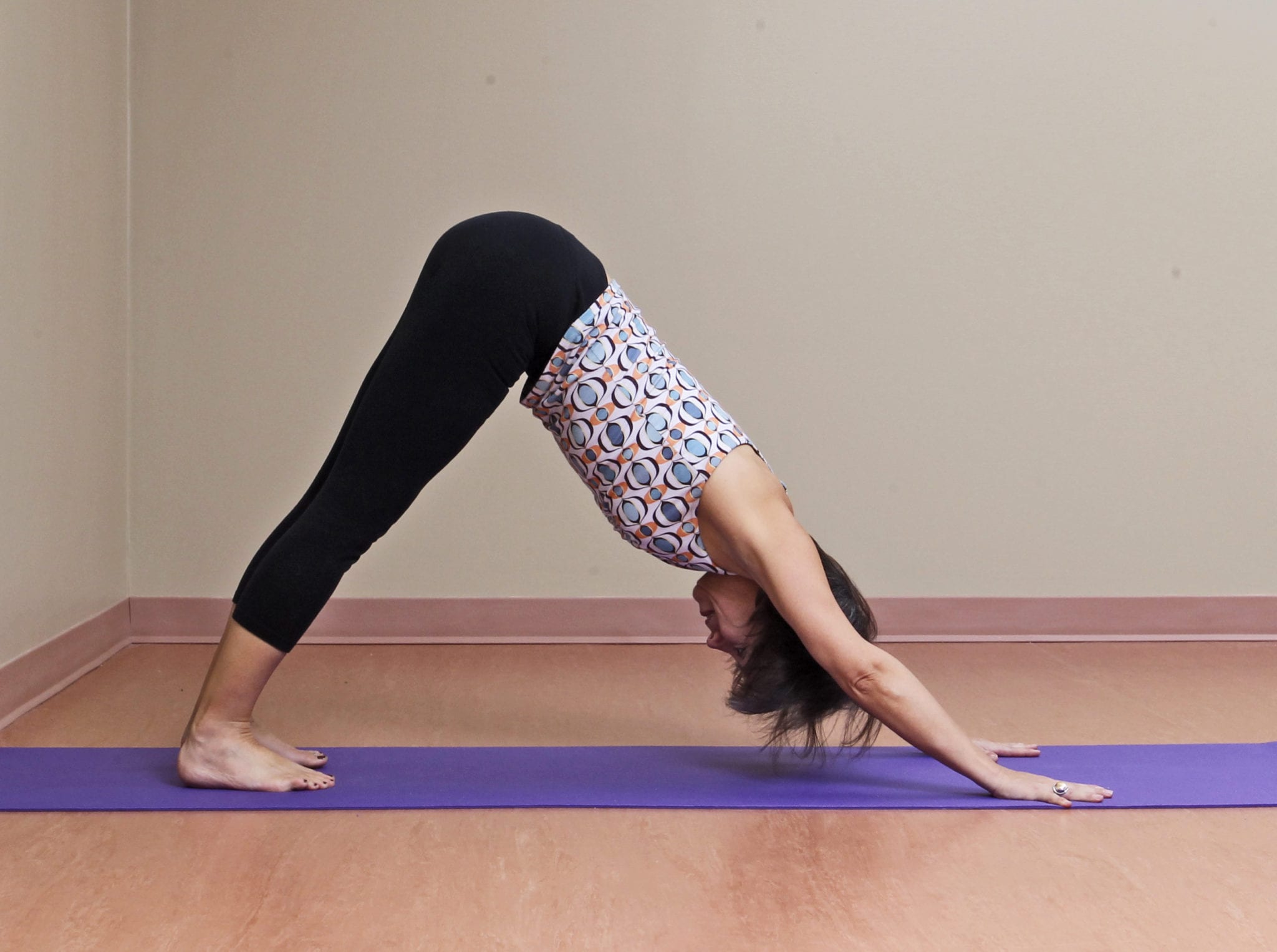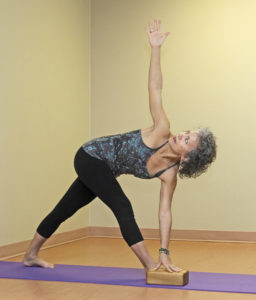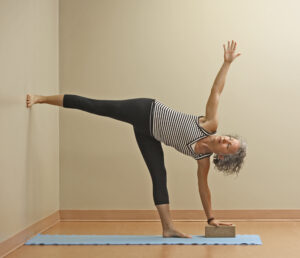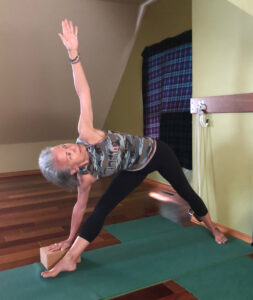The tailbone, or coccyx, is a small, triangular bone located at the bottom of the spine. It measures less than one inch (2.5 cm) in length and curves like a hawk’s beak — widest where it meets the sacrum and narrowest at its tip. Yogis often refer to the tailbone as the rudder of the spine, which signifies its overall impact on the spine’s movement, curvature and length.
As an anchor to several muscles in the pelvis, the tailbone is one of the bones that bears the body’s weight while sitting. Small as it is, it serves as an attachment site for tendons and ligaments, an insertion point for some of the pelvic floor muscles and as a stabilizer while in a seated position.
Unfortunately, many people slump in their chairs or lean backward, thereby sitting on their tucked tailbone. When this occurs, the tailbone moves inward and the upper pelvis tilts backwards, creating stress on the lumbar spine (at the back waist). Inversely, when a person sits too far forward on their sit bones, the tailbone moves outward (lifts) and the upper pelvis tilts inward, also creating undue stress to the lumbar. Even though we never actually sit directly on our tailbone, healthy seated postures necessitate balancing the body’s weight between the tripod of the two sit bones and the tailbone.
If there is trauma or injury to the tailbone from poor posture, a fall or a complicated childbirth, it is important to consult a health professional prior to practising yoga. This spinal injury can take several months to heal so monitor your yoga practice for any evidence of pain during or after each pose. Honour your body by finding ways to reduce pain, not increase it.
The yoga action below and its accompanying poses work to strengthen and lengthen the spine. In addition, the buttocks, legs and back are strengthened, while abdominal organ health is improved. The instruction used encourages a lengthening of the whole sacrum down toward the heels. Notice if you can feel this downward movement.
Action: Lengthen down the tailbone through the legs and into the heels. For more advanced practitioners, lengthen the left side of the tailbone into the right heel and the right side of the tailbone into the left heel.
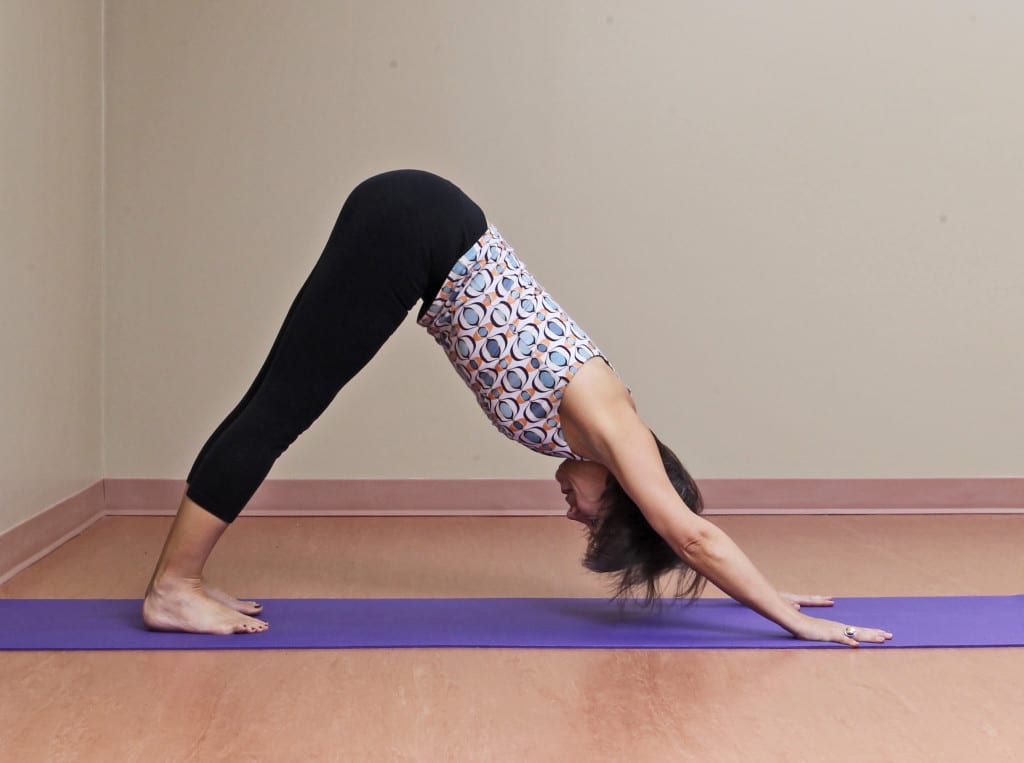
ADHO MUKHA SVANASANA (Downward Facing Dog Pose)
Begin on all fours with your hips over your knees and your wrists slightly in front of your shoulders. Tuck your toes under, press into your hands and feet, and lift your hips upward as you straighten your legs. Keeping the spine long, draw down from your tailbone into your heels as they release toward the floor.
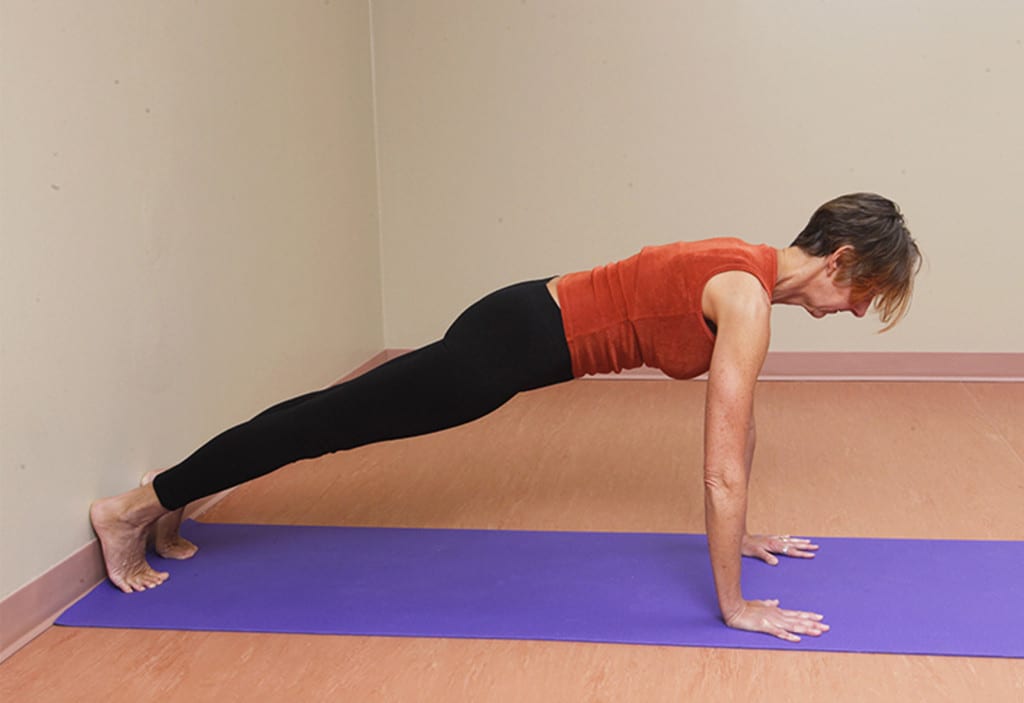
PLANK
From Adho Mukha Svanasana, draw your shoulders directly over your wrists and straighten your body. You may need to move closer to the wall so your heels can press into it. Find the lengthening action of the tailbone to extend through the legs and heels.
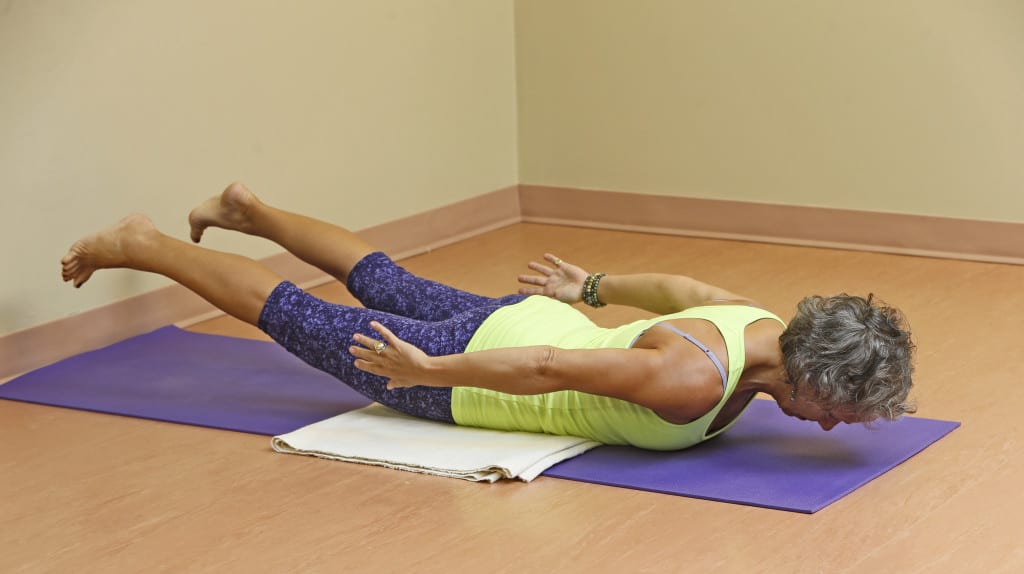
SALABHASANA (Locust Pose)
Move far enough away from the wall so your toes no longer touch. Place a blanket on your mat to cushion your pelvis and pubic bone. Begin by lying face down with your arms alongside of your body, and find the tailbone action in this static position. On your next inhale, lift your chest and head off the floor. As you exhale, lift the legs. Now find the action in this dynamic position.
To discover more actions and poses involving the tailbone and pelvis, see Creating Space: Yoga Actions for Pelvis & Psoas (print or e-book).

